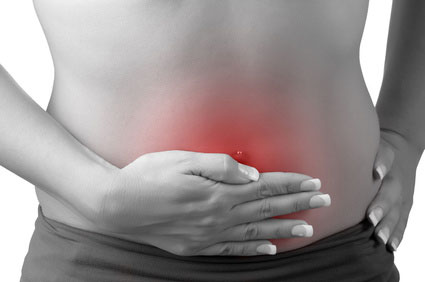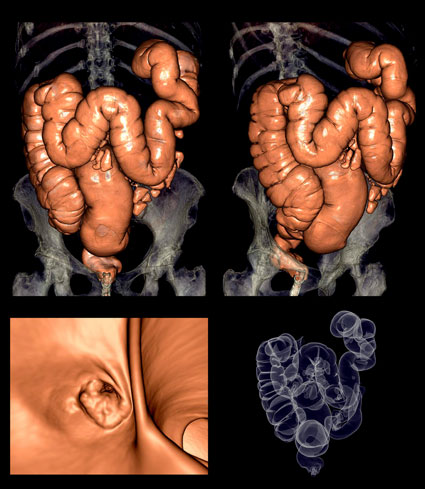Colon Cancer Unit
Colon cancer is a disease which increases each year in our country. The purpose of this unit is to prevent and diagnose in early stages this pathology. These objectives achieve cure rates near to 95%.
COLON CANCER
Colon Cancer Unit
CMED provides a Colon Cancer Unit composed of specialists in the digestive system, surgeons of the digestive system, endoscopists, radiologists and technical staff of the laboratory that under the direction of Dr Gonzalo Guerra Azcona have the objective of fighting against this disease that grows annually thanks to early detection and personalized treatment.
As it is an integral center for the treatment all digestive pathologies, CMED offers great efficiency in cases where the disease is detected at the same time as it relies on a multidisciplinary team that can offer a consensual approach of colon cancer by the best specialist in the treatment of this pathology.
The team of this Unit of Colon Cancer offers patients:
- Preventive advice: information on food habits, physical activity, tobacco or alcohol consumption, study of family background, etc.
- Early diagnosis: CMED has the necessary technology for the early diagnosis of the disease. The center has an endoscopy suite where colonoscopies are performed which is the most effective for the detection of this type of cancer. This test along with ultrasounds, CT scans, the Septin 9 test and analysis of bloody stools provides full certainty on the existence of colon cancer.
- Therapeutic surgery: Treatment of colorectal cancer is multidisciplinary and requires the intervention of Gastroenterologists, Oncologists, Radiologists and Digestive Surgeons. CMED assembles these specialties and each case is discussed to decide on the most convenient therapeutic approach.
In most cases it is necessary to perform surgery for the resection of the area of the colon where the tumor is located. This surgery is considered complex and may be performed through laparoscopy or openly, as the case may be.
In CMED, the laparoscopic approach is the one chosen in nearly 100% of the cases achieving the very quick recovery of the patient which allows the early beginning of chemo and radio therapies when necessary.
On the other hand, as the team is formed by surgeons and endoscopists, endoscopic resections of big size polyps are performed which otherwise would only be possible to do it surgically.
THE COLON

The colon or large intestine is the final part of the digestive system. It measures around 1.5 meters, its width is of around 6.5cm and goes from the end of the small intestine to the anus.
Colon has four parts or sections. The first one is the ascending colon. It is on the right hand side of the abdomen. At the bottom it connects with the final part of the small intestine through the caecum. From here it reaches the area of the liver and crosses the abdomen from right to left. This is called transverse colon. These two first sections of the colon are in charge of absorbing water and electrolytes (sodium, potassium, etc.) of the alimentary bolus.
In turn, the transverse colon meets on the left hand side of the abdomen the descending colon which also connects with the anus through the sigmoid colon and the rectum (receives this name because it is S-shaped). The function of these two parts of the colon is the storage of stool material until its excretion through the anuss well as the absorption of water.
The colon and the rectum are formed by several tissue linings: mucous, sub-mucous, muscular and serous. In the mucous, which is the innermost part, there are glands which purpose is to produce a viscous material called mucus aimed at aiding the transit of the alimentary bolus and stool material through the colon until its excretion through the anus. It is in fact in these glands where the so calledpolypscan appear.
COLON CANCER
All organs of our body are composed of cells. Each cell of our body is divided so that it can replace those which die. When this cell renovation is interrupted or modified for one cell, both such cell and its descendants start dividing without control and generate a nodule or tumor which is not always malignant.
However when these cells with an abnormal conduct invade other nearby tissues or organs or even when they proliferate in other parts of the body it is when a malignant tumor or cancer is developed. When this tumor cells develop in the area of the colon or rectum is when colon cancer or colorectal cancer is observed.
INCIDENCE OF COLON CANCER IN SPAIN
Colon cancer is the malignant tumor which incidence is growing the most in our country and in general in all developed countries. According to figures of the Spanish Cancer Association, each year over 32,000 new cases are diagnosed and is responsible for nearly 14,700 deaths per year.
In Spanish, men it is the third one in frequency after lung cancer and prostate cancer. In women it is the second one in frequencyafter breast cancer. However, if we consider both sexes together, the most frequent one is colon cancer.
Most cases are diagnosed between 65 and 75 years of age with a peak at 70 years of age, although there are cases from 35-40 years. Cases appearing at early ages are due to genetic predisposition.
SYMPTONS OF COLON CANCER
Symptoms of colon cancer vary depending on the location of the tumor. If you detect any of them you should visit a physician specialized in the digestive system to perform the tests confirming or ruling out this diagnosis. Nevertheless, having any of the symptoms described below does not mean that you suffer colon cancer as some of them correspond also to other digestive pathologies such as hemorrhoids, ulcerative colitis and Crohn disease.
- Blood in stools: It is one of the most frequent symptoms of colon cancer. It may be red or black depending on whether the tumor is located at the beginning or at the end of the large intestine. If you do not detect this symptom or do not visit a specialist for a diagnosis, after a while you may also suffer anemia.
- Changes in normal natural rhythm: Diarrhea and constipation modifying the standard and normal rhythm of depositions. Normally periods of diarrhea alternate with periods of constipation.
- Narrower stools: this change in the size of stools is due to the narrowing of the intestine by the tumor which does not allow a normal excretion of stools.
- Feeling of incomplete excretion: Also known as tenesmus. It takes place when the cancer is located at the end of the colon or in the rectum.
- Abdominal pain: Very frequent symptom of this disease although it is a pain that can be located anywhere in the abdomen. It takes place when the large intestine is obstructed by the tumor. If there is a partial obstruction, pain is similar to that of colics. When it is total, intestinal obstruction requiring urgent medical assistance is developed.
- Intense fatigue and loss of weight without an apparent reason: These are symptoms appearing in different diseases, among which we find colon cancer on an advanced stage.
RISK GROUPS AND FACTORS

Colon cancer is a disease affecting both men and women but there are some aspects that make more likely the onset of this disease than others at some stage. These aspects may be due to age or genetic as well as to factors consequence of life style.
Risk groups
- Over 50 years of age: Colon cancer is a disease which affects mainly people over 50 years of age although it is also diagnosed in young people. The reason is that with age there are more possibilities of developing polyps in the large intestine which in many cases are the precursors of malignant tumors.
- People with a family or personal history of colon cancer or polyps in the large intestine: If a close relative, such as parents, grandparents or siblings, has suffered colon cancer it is possible that they may have passed along the possibility of suffering cancer in the future. In addition, if there is a history of suffering colon cancer or a history of polyps, the possibility of suffering from it or developing it again increase.
- People with chronic inflammatory bowel diseasessuch as ulcerative colitis or Crohn disease.
Risk factors
- Poor diet: A diet based on fatty and red meat and therefore poor in fiber is a factor normally associated to a greater risk of suffering different diseases such as cardiovascular and colon cancer.
- Alcohol and Tabaco consumption: Both substances favor the development of polyps in the mucous of the colon. Polyps are tumors which in some cases turn malignant causing colon cancer.
- Physical inactivity: Having a sedentary life and not developing any type of physical activity also increases the possibility of developing different diseases, among them colorectal cancer.
IMPORTANCE OF AN EARLY DIAGNOSE
The early diagnose in colon cancer is crucial as it is a disease with a cure rate around 90% if detected on its early stages.Moreover, medical and scientific progress allows the detection of colon cancer even before the patient shows symptoms of the disease.
At present, there are different tests which provide such early diagnosis efficiently and easily. In CMED, we rely on the technology and experience necessary to perform such tests to patients who wish to prevent it as they are in any of the risk groups or by direct recommendation of the specialist in the digestive system.

Diagnostic tests for colon cancer
- Colonoscopy: The test par excellence for the diagnosis of colon cancer. It is performed in an endoscopy suite of the center with an endoscopist, an anesthetist and a nurse. For the correct performance of the test and in order to avoid discomfort to the patient it is done with sedation. Colonoscopy provides a total view of the colon as well as the resection of polyps if there exist. These polyps are analyzed later on by a histopathologist to know if they are malignant or not.
- Virtual colonoscopy: An alternative for those patients who do not wish to undergo a traditional colonoscopy as they consider it highly invasive or for those patients who have to use it for medical reasons. This test does not require sedation so patients may resume their daily routines immediately and it provides a 3D vision of the inside of the large intestine.
- Septin 9 blood test: This test consists on a blood test to detect the presence of the methylated form of Septin 9 gen (mSEPT9), a new genetic tumor marker found in over 90% of colon tumors. This screening allows the identification of colorectal tumors in its early stages when the patient does not even show symptoms and when colon cancer has greater cure rates (over 90% of cases).
The patient may perform this test at any time of the day as fasting or any prior preparation is not necessary.
This test is recommended for all people over 50 years of age and those who have never done a routine colonoscopy as established in colorectal screening programs. - Bloody stools test: A test the patient performs at home. It is necessary to collect three days samples and put them in flat boxes containing reactive strips. These boxes are taken to the medical center and the staff will construe the results. Should the test be positive in blood, the digestive system professional will prescribe further tests to know the origin of such blood (hemorrhoids, polyps or malign tumor).

